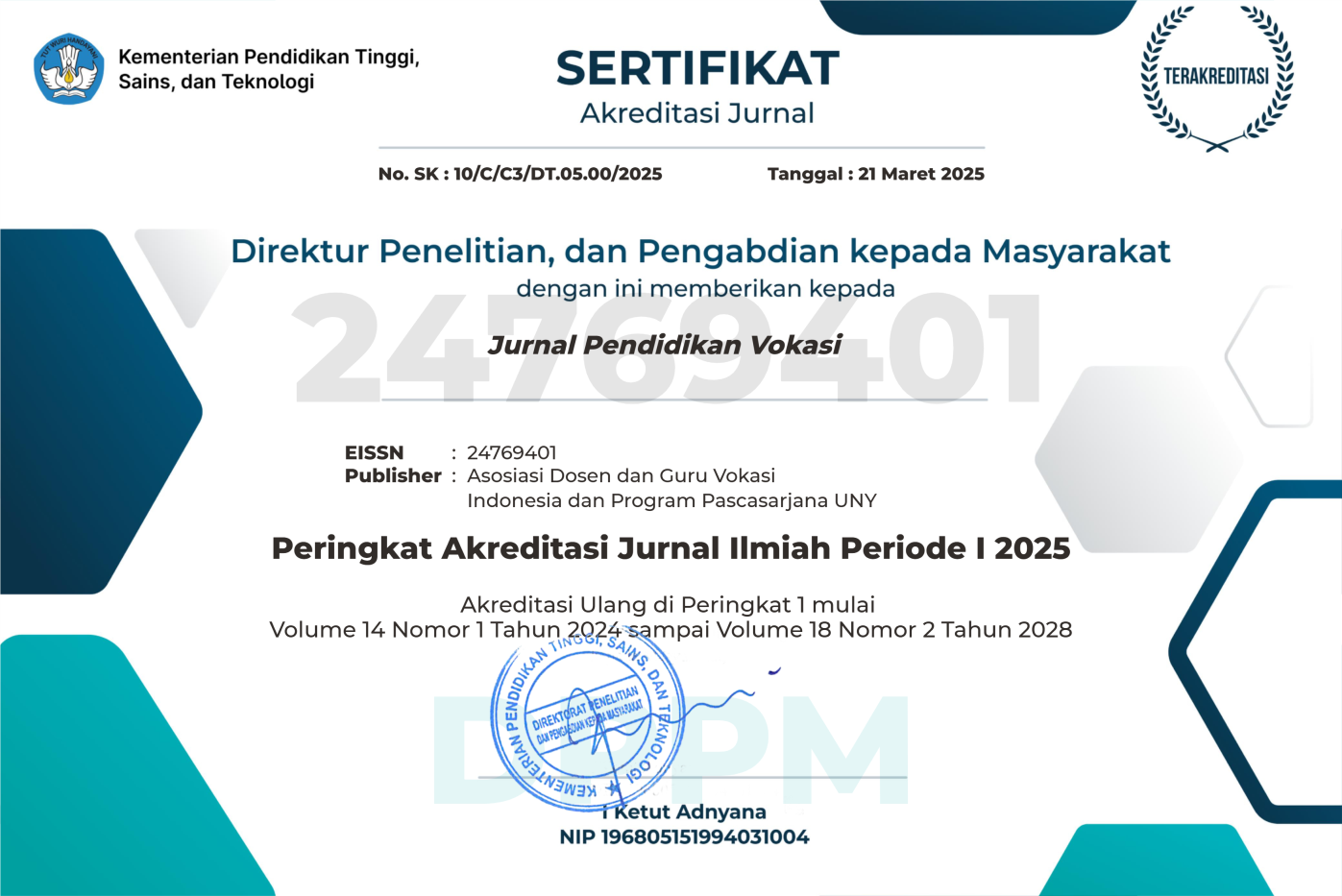The effectiveness of archiving simulation video in Vocational High School
DOI:
https://doi.org/10.21831/jpv.v7i2.13951Keywords:
simulation video, archiving, students' competencyAbstract
References
Berk, R. A. (2009). Multimedia teaching with video clips: TV, movies, YouTube, and mtvU in the college classroom. International Journal of Technology in Teaching and Learning, 5(1), 1–21. Retrieved from http://www.ronberk.com/articles/2009_v ideo.pdf
Hamalik, O. (2011). Proses belajar mengajar. Jakarta: Bumi Aksara.
Handoko, T. H. (2003). Manajemen personalia dan sumberdaya manusia. Yogyakarta: BPFE.
Ismail, R., & Ngah, Z. A. (2005). The pattern of e-book use amongst undergraduates in malaysia: A case of to know is to use. Malaysian Journal of Library & Information Science, 10(2), 1–23. Retrieved from http://ejum.fsktm.um.edu.my/ArticleInfo rmation.aspx?ArticleID=327
Jong, T. de, Specht, M., & Koper, R. (2008). Contextualised media for learning. Journal of Educational Technology & Society, 11(2), 41–53. Retrieved from http://www.ifets.info/journals/11_2/5.pd f
Murtono, & Miskiyah, E. (2014). Pengembangan instrumen evaluasi dengan teknik simulasi sebagai asesmen alternatif dalam pembelajaran fisika materi mekanika fluida SMA kelas XI. Jurnal Inovasi Dan Pembelajaran Fisika, 1(1), 1–11. Retrieved from http://ejournal.unsri.ac.id/index.php/jipf/ article/view/1041
Riyana, C. (2007). Pedoman pengembangan media video. Bandung: Universitas Pendidikan Indonesia.
Sugiyono. (2011). Metode penelitian kuantitatif, kualitatif dan R & D. Bandung: Alfabeta.
Tegeh, I. M., Jampel, I. N., & Pudjawan, K. (2014). Model penelitian pengembangan. Yogyakarta: Graha Ilmu.
Trianto. (2010). Mendesain model-model pembelajaran inovatif progresif. Jakarta: Kencana Media Pranada Group.
Downloads
Published
How to Cite
Issue
Section
Citation Check
License
The authors submitting a manuscript to this journal agree that, if accepted for publication, copyright publishing of the submission shall be assigned to Jurnal Pendidikan Vokasi. However, even though the journal asks for a copyright transfer, the authors retain (or are granted back) significant scholarly rights.
The copyright transfer agreement form can be downloaded here: [JPV Copyright Transfer Agreement Form]
The copyright form should be signed originally and sent to the Editorial Office through email to jpvokasi@uny.ac.id
Jurnal Pendidikan Vokasi by http://journal.uny.ac.id/index.php/jpv is licensed under a Creative Commons Attribution-ShareAlike 4.0 International License.












